Jazz is a kind of music that has often been called the only art form to originate in the United States. The history of jazz began in the late 1800’s. The music grew from a combination of influences, including Black American music, African rhythms, American band traditions and instruments, and European harmonies and forms. Much of the best jazz is still written and performed in the United States. But musicians from many other countries are making major contributions to jazz. Jazz was actually widely appreciated as an important art form in Europe before it gained such recognition in the United States.
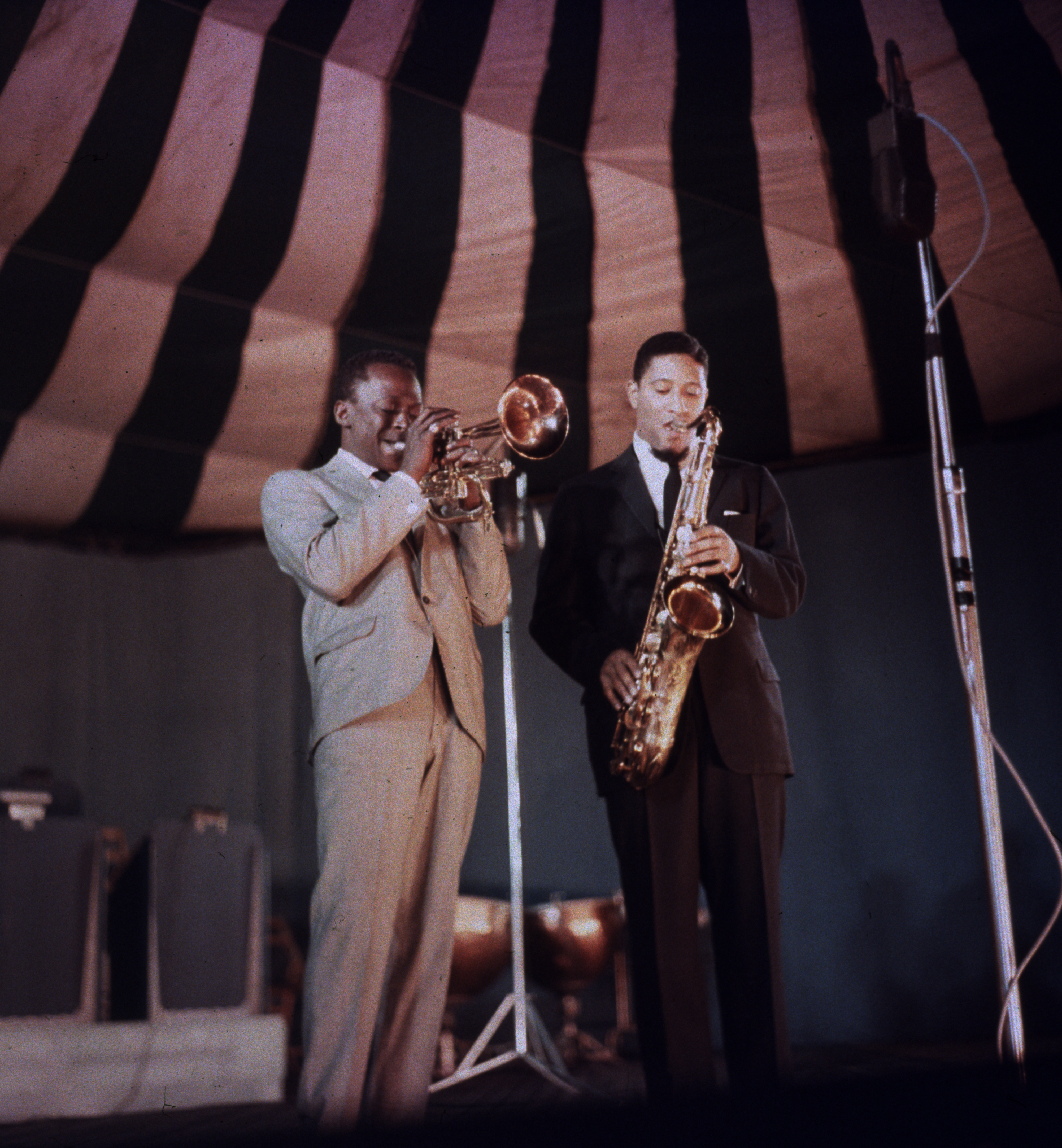
One of the key elements of jazz is improvisation—the ability to create new music spontaneously. This skill is the distinguishing characteristic of the genuine jazz musician. Improvisation raises the role of the soloist from just a performer and reproducer of others’ ideas to a composer as well. And it gives jazz a fresh excitement at each performance.
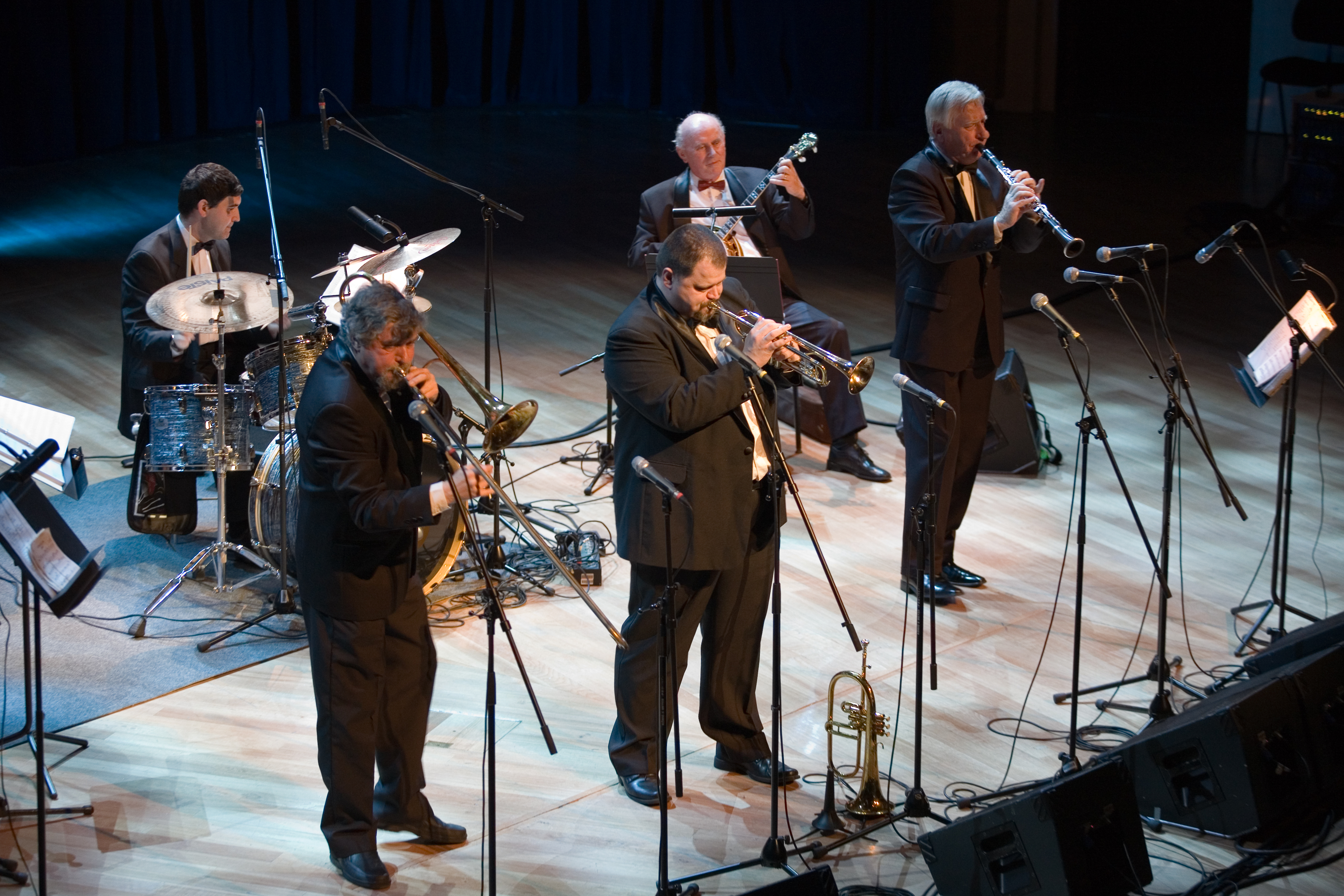
Another important element of jazz is syncopation. To syncopate their music, jazz musicians take patterns that are even and regular and break them up, make them uneven, and put accents in unexpected places.
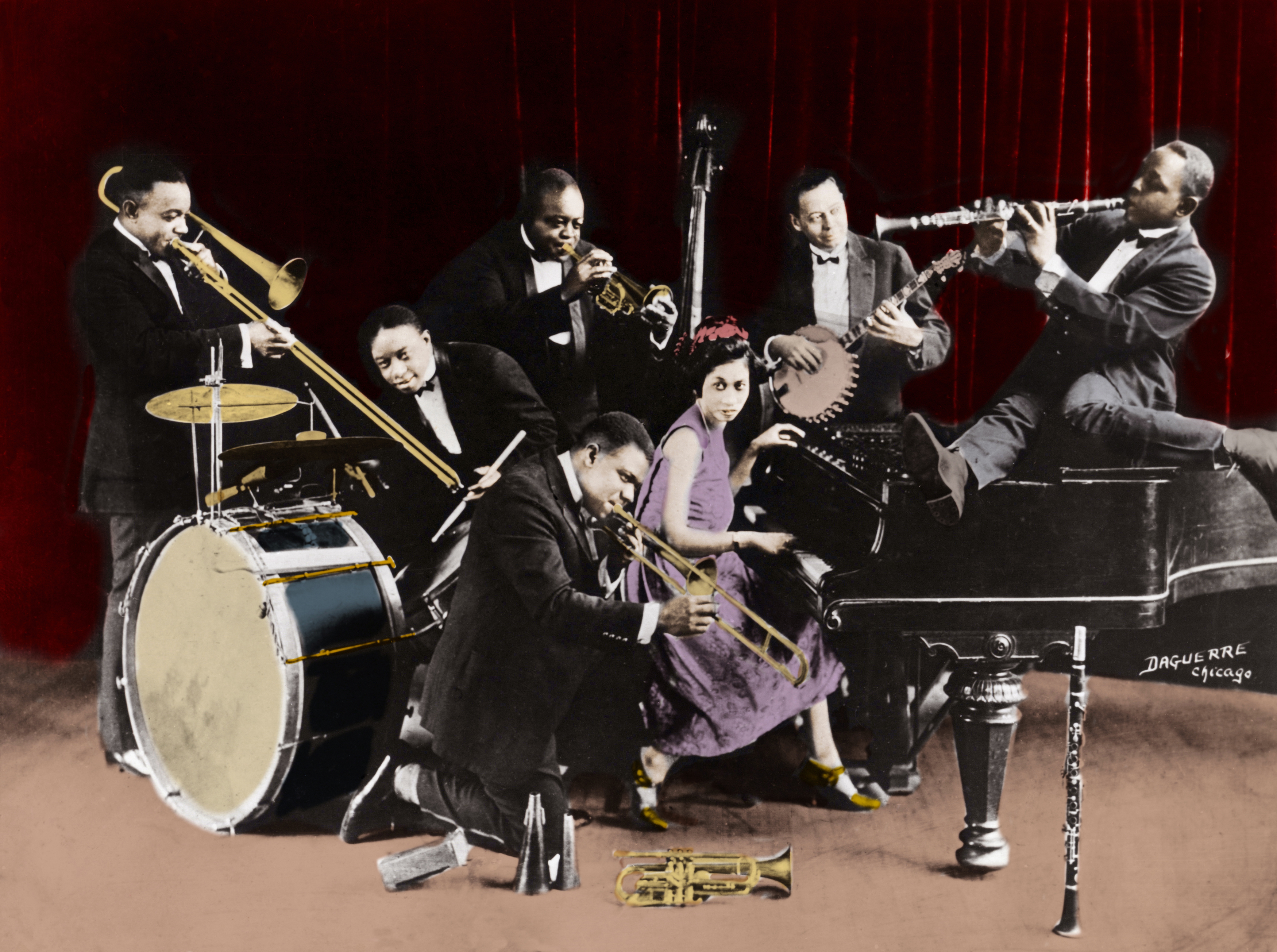
The earliest jazz was performed by Black Americans who had little or no training in Western music and by “Creoles of color,” who were educated and had musical training. Creoles were descendants of early French or Spanish settlers in Louisiana. These musicians drew on a strong musical culture from Black life. As jazz grew in popularity, its sound was influenced by musicians with formal training and classical backgrounds. During its history, jazz has absorbed influences from the folk and classical music of Africa, Asia, and other parts of the world. The development of instruments with new and different characteristics has also influenced the sound of jazz.
The sound of jazz
Jazz may be performed by a single musician, by a small group of musicians called a combo, or by a big band of 10 or more pieces. A combo is divided into two sections: a solo front line of melody instruments and a back line of accompanying instruments called a rhythm section. The typical front line consists of one to five brass and reed instruments. The rhythm section usually consists of piano, bass, drums, and sometimes an acoustic or electric guitar or banjo. The front-line instruments perform most of the solos. These instruments may also play together as ensembles. A big band consists of reed, brass, and rhythm sections.

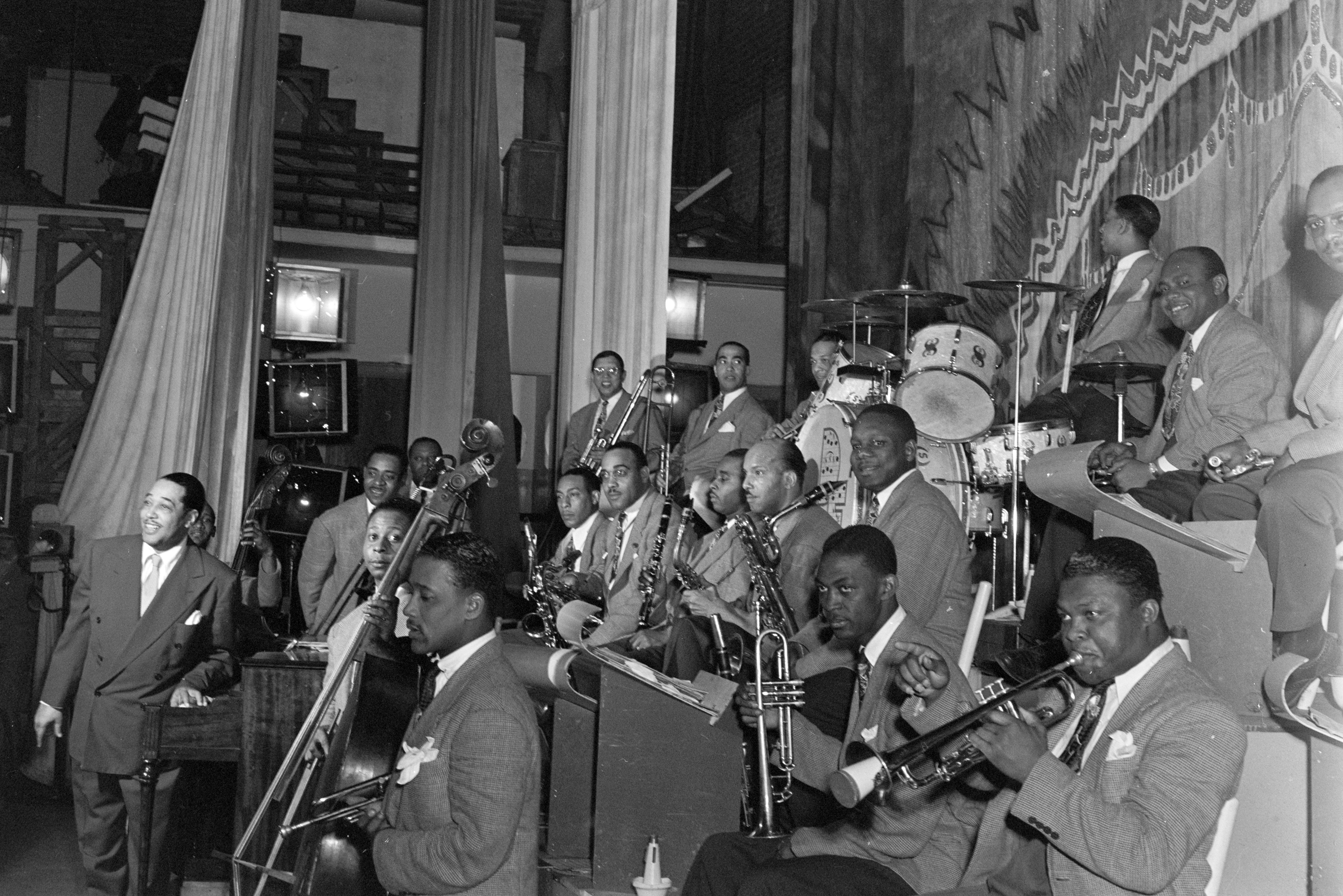
The rhythm section in a combo or big band maintains the steady beat and decorates the rhythm with syncopated patterns. It also provides the formal structure to support solo improvisations. The drums keep the beat steady and add interesting rhythm patterns and syncopations. The piano—or sometimes a guitar—plays the chords or harmonies of the composition in a rhythmic manner. The bass outlines the harmonies by sounding the roots, or bottom pitches, of the chords, on the strong beats of each measure. Any of the rhythm instruments, especially the piano, may also solo during a performance.
The brass.
The principal brass instruments of jazz are the trumpet, the cornet, and the slide trombone. But the French horn, the valve trombone, the baritone horn, the flugelhorn, and even electronic trumpets have been used in jazz performances.
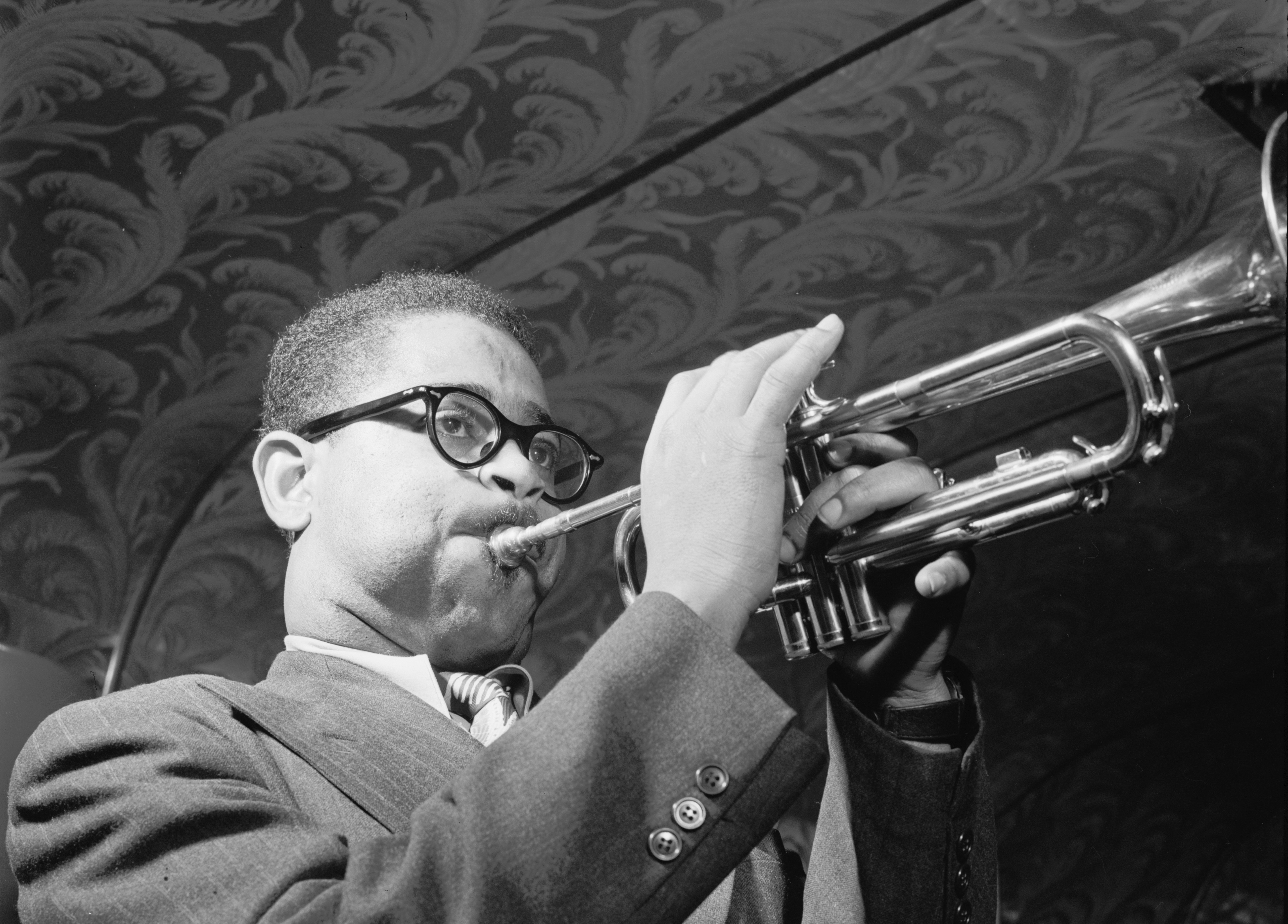
The cornet and trumpet are melody instruments of identical range. But the cornet is usually considered more mellow and the trumpet more brassy. Most jazz performers today use the trumpet. The slide trombone blends with the trumpet. Today, the typical brass section of a big band consists of four or five trumpets and three or four trombones.
Jazz trumpeters and trombonists frequently use objects called mutes to alter or vary the sound of their instrument. The player plugs the mute into the bell (flared end) of the instrument or holds it close to the opening of the bell.
The reeds.
The clarinet and saxophone are the principal reed instruments of jazz. The flute, though technically a woodwind, is often classified as a reed in jazz. It is used especially as a solo instrument.
Both the clarinet and saxophone families range from soprano to bass. Only the soprano clarinet has been universally used in jazz. In early jazz, it was an equal member of the front line with the trumpet or cornet and the trombone. The clarinet eventually gave way to the saxophone, which is capable of much greater volume. Four members of the saxophone family—the soprano, alto, tenor, and baritone saxophones—are regularly employed in jazz. A typical reed section in a big band is made up of one or two alto saxophones, two tenors, and a baritone. Musicians often “double” by playing two or more reed instruments, such as an alto saxophone and a tenor saxophone, during a performance.
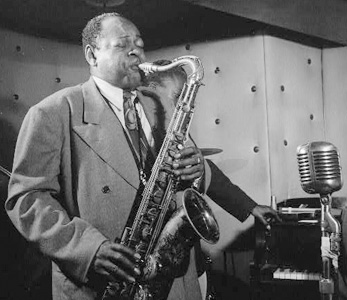
Drums
of various types were familiar to Black Americans dating back to the days of slavery. These early percussion instruments played a vital role in the development of jazz.
As jazz grew, the drum set evolved until one drummer could play more than one percussion instrument at the same time. The invention of a foot-operated bass-drum pedal and pedal-operated cymbals freed the drummer’s hands to play other percussion instruments, such as snare drums, tom-toms, cowbells, and wood blocks. Another important invention was a wire brush that the drummer used in place of a drumstick or mallet to produce a more delicate sound on drums and cymbals. Today, a jazz drummer may use electronic percussion instruments that can create an almost infinite variety of sounds and reproduce them accurately at virtually any volume.
The piano.
Since the earliest days of jazz, the piano has served both as a solo instrument and as an ensemble instrument that performs as part of the rhythm section. Today, other keyboard instruments, including electronic organs, electric pianos, and synthesizers controlled by a keyboard, may substitute for pianos.
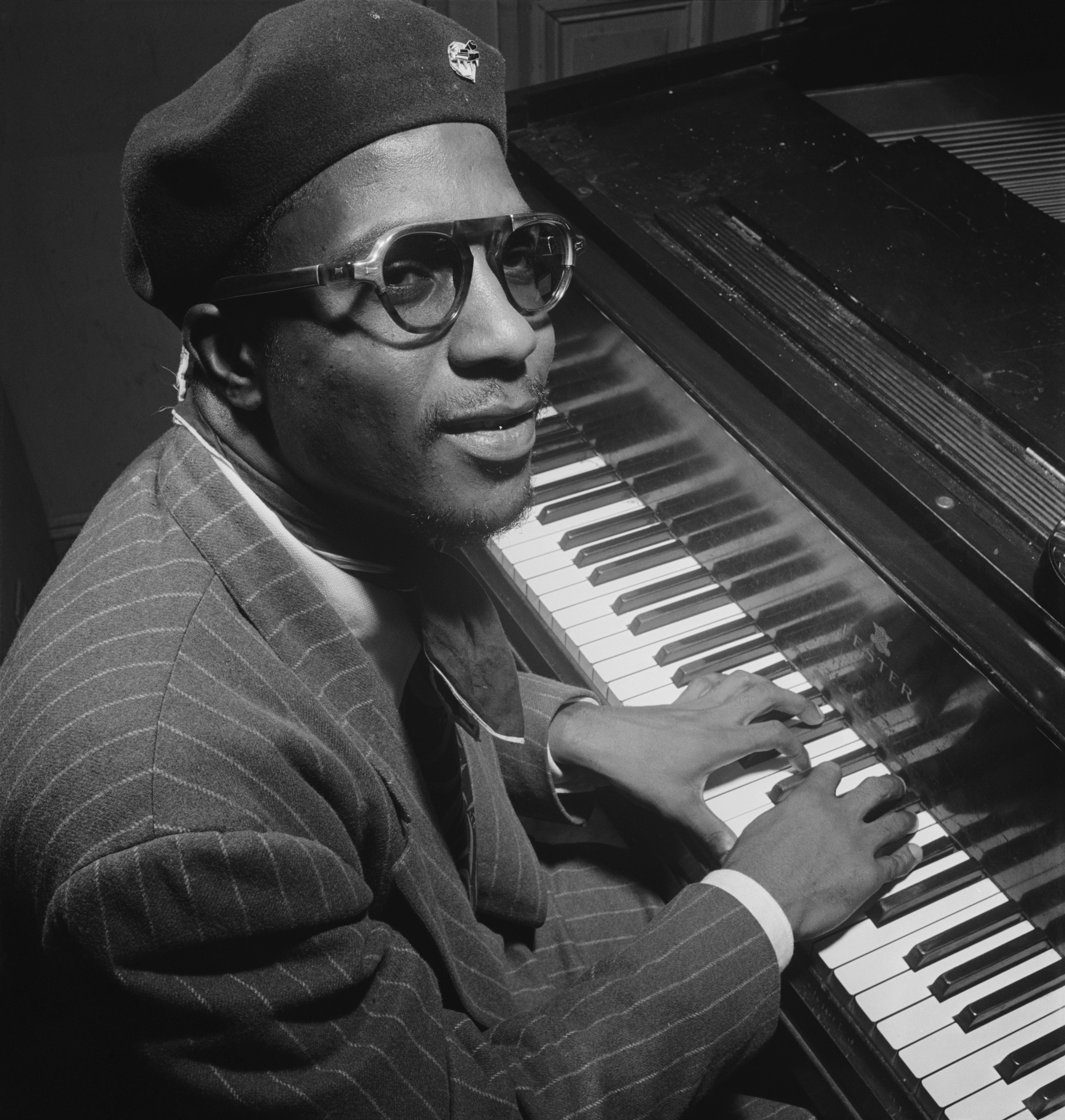
The guitar,
like the piano, is capable of playing both chords and melodies. In the early days of jazz, these two instruments, along with the banjo, were often substituted for one another. Later, however, the guitar and banjo were most often used in the rhythm section in addition to the piano. The banjo eventually disappeared from almost all later forms of jazz. Jazz musicians have used the acoustic guitar in ensembles and as a solo instrument since jazz’s earliest days. The electric guitar emerged in jazz in the late 1930’s to add sustained tones, greater volume, and a new assortment of sounds and effects to jazz.
The bass
plays the roots of the harmonies. The musician normally plucks a string bass. The rhythm section may substitute a brass bass, such as a tuba or Sousaphone. When an electronic organ is used, the organist can play the bass part with foot pedals on the instrument. Electric bass guitars have been incorporated into some jazz ensembles, primarily those that play a “fusion” of jazz and rock music.
Other instruments.
Nearly every Western musical instrument and many non-Western instruments have been used in jazz at one time or another. The vibraphone, an instrument similar to the xylophone, and the violin deserve special mention. The vibraphone has been especially popular in combos. The violin has had only a few notable soloists in jazz, possibly because its volume could not match the power of the trumpet or trombone in ensemble. But throughout jazz history there have been some violinists who have skillfully adapted this basically classical music instrument to jazz. Modern amplification and sound manipulation devices have given the violin new and exciting possibilities as a jazz instrument.
The history of jazz
The roots of jazz.
The folk songs and plantation dance music of Black Americans contributed much to early jazz. These forms of music occurred throughout the Southern United States during the late 1800’s.
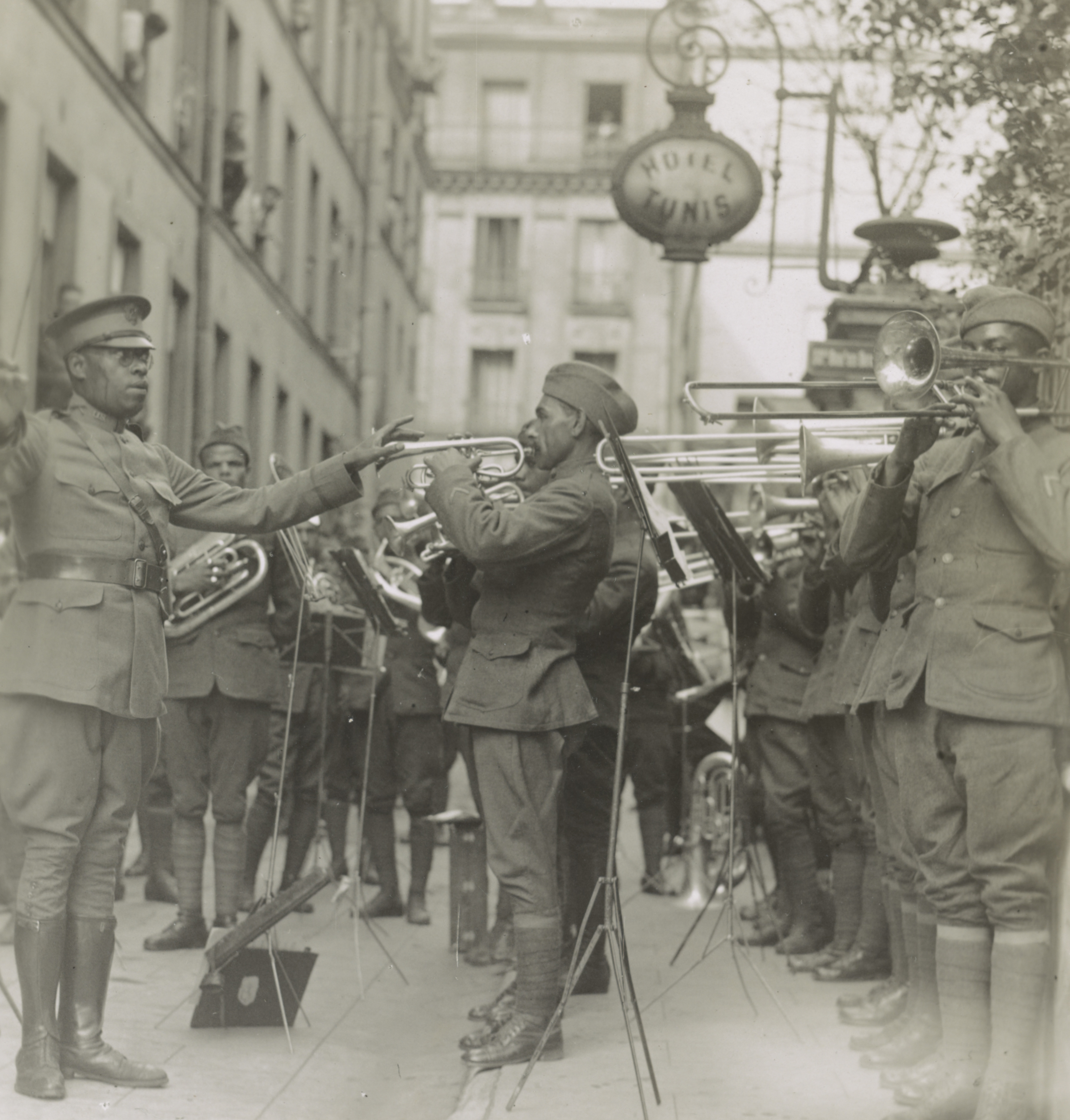
Ragtime, a musical style that influenced early jazz, emerged from the St. Louis, Mo., area in the late 1890’s. It quickly became the most popular music style in the United States. Ragtime was an energetic and syncopated variety of music, primarily for the piano, that emphasized formal composition.
The blues is a form of music that has always been an important part of jazz. The blues was especially widespread in the American South. Its mournful scale and simple repeated harmonies helped shape the character of jazz. Jazz instrumentalists have long exploited the blues as a vehicle for improvisation.
Early jazz.
Fully developed jazz music probably originated in New Orleans at the beginning of the 1900’s. New Orleans style jazz emerged from the city’s own musical traditions of band music for Black funeral processions and street parades. Today, this type of jazz is sometimes called classic jazz, traditional jazz, or Dixieland jazz. New Orleans was the musical home of the first notable players and composers of jazz, including cornetists Buddy Bolden and King Oliver, cornetist and trumpeter Louis Armstrong, saxophonist and clarinetist Sidney Bechet, and pianist Jelly Roll Morton.
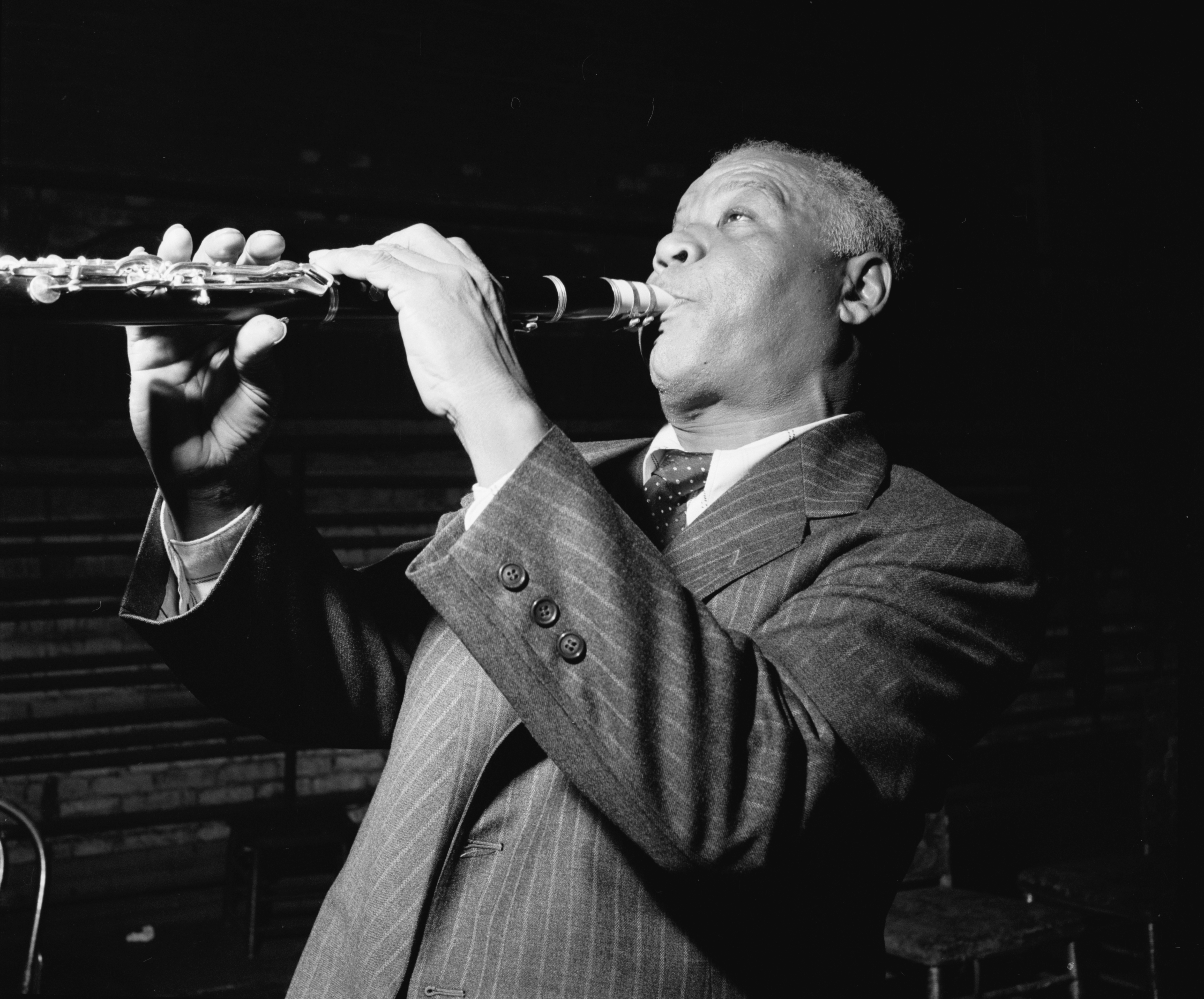
Jazz soon spread from New Orleans to other parts of the country. Fate Marable led a New Orleans band that played on riverboats traveling up and down the Mississippi River. King Oliver migrated to Chicago, and Jelly Roll Morton performed throughout the United States. Five white musicians formed a band in New Orleans, played in Chicago, and traveled to New York City, calling themselves the Original Dixieland Jass Band (the spelling was soon changed to “Jazz”). This group made the earliest jazz phonograph records in 1917, and played live in England in 1919 and 1920. Mamie Smith recorded “Crazy Blues” in 1920, and recordings of ragtime, blues, and jazz of various kinds soon popularized the music to a large and eager public.
Loading the player...Dixieland jazz
The 1920’s
have been called the golden age of jazz or the jazz age. Commercial radio stations, which first appeared in the 1920’s, featured live performances by the growing number of jazz musicians. New Orleans; Memphis; St. Louis; Kansas City, Missouri; Chicago; Detroit; and New York City were all important centers of jazz.
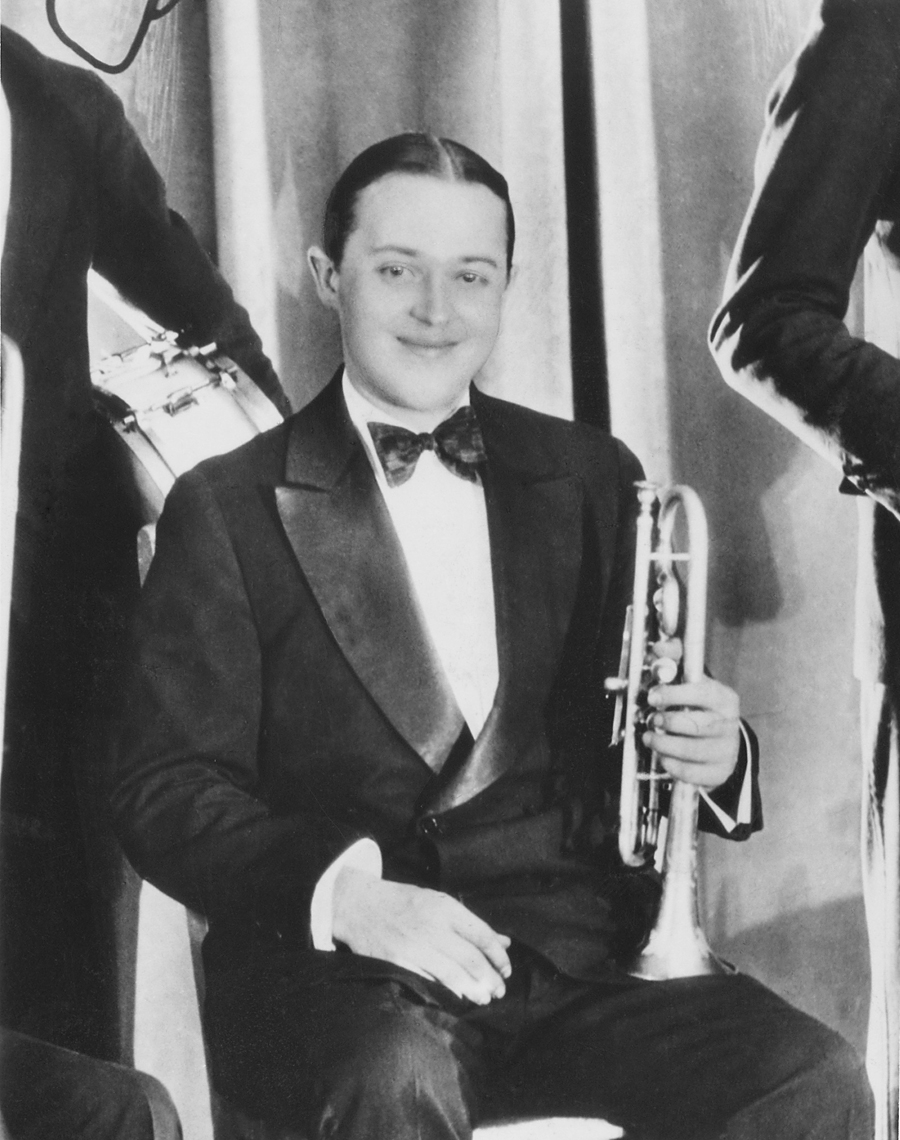
A group of Midwest youths, many from Chicago’s Austin High School, developed a type of improvisation and arrangement that became known as “Chicago style” jazz. These musicians included trumpeters Jimmy McPartland and Muggsy Spanier; cornetist Bix Beiderbecke; clarinetists Frank Teschemacher, Pee Wee Russell, Mezz Mezzrow, and Benny Goodman; saxophonists Frankie Trumbauer and Bud Freeman; drummers Dave Tough, George Wettling, and Gene Krupa; and guitarist Eddie Condon. They played harmonically inventive music, and the technical ability of some of the players, especially Goodman, was at a higher level than that of many earlier performers.
Loading the player...Chicago style jazz
In New York City, James P. Johnson popularized a new musical style from ragtime called stride piano. In stride piano, the left hand plays alternating single notes and chords that move up and down the scale while the right hand plays solo melodies, accompanying rhythms, and interesting chordal passages. Johnson strongly influenced other jazz pianists, notably Count Basie, Duke Ellington, Art Tatum, Fats Waller, and Teddy Wilson.
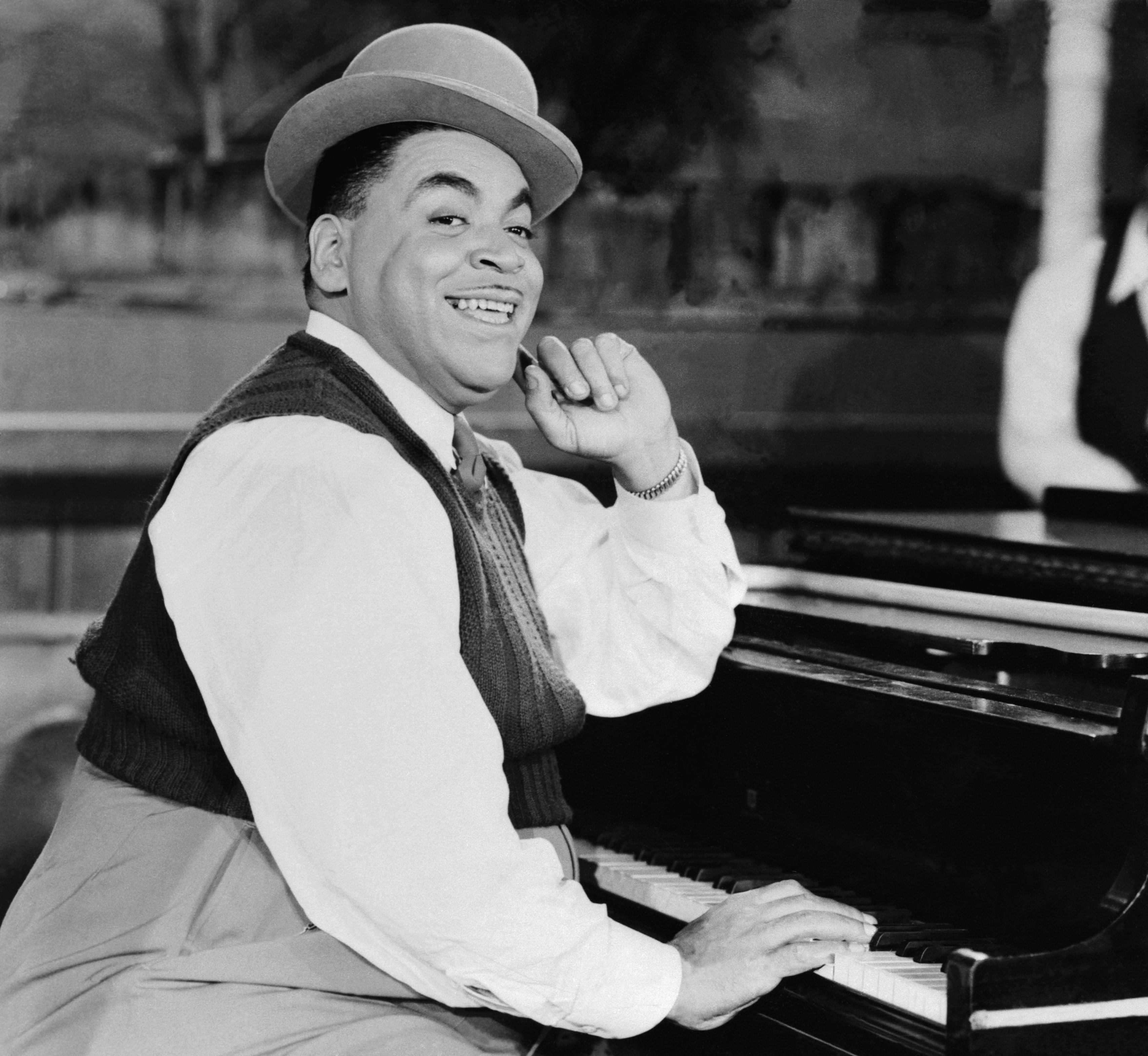
Fletcher Henderson was the first major figure in big band jazz. In 1923, he became the first leader to organize a jazz band into sections of brass, reed, and rhythm instruments. He and his arranger, Don Redman, were the first to master the technique of scoring music for big bands. Various Henderson bands of the 1920’s and 1930’s included such great jazz instrumentalists as Louis Armstrong and saxophonists Benny Carter and Coleman Hawkins.

Armstrong made some of his most famous recordings with his own Hot Five and Hot Seven combos from 1925 to 1928. These recordings rank among the masterpieces of jazz, along with his duo recordings of the same period with pianist Earl “Fatha” Hines. Armstrong also became the first well-known male jazz singer, and popularized scat singing—that is, wordless syllables sung in an instrumental manner.
During the late 1920’s and early 1930’s, jazz advanced from relatively simple music played by performers who often could not read music to a more complex and sophisticated form. Among the musicians who brought about this change were saxophonists Benny Carter, Coleman Hawkins, and Johnny Hodges; the team of violinist Joe Venuti and guitarist Eddie Lang; and pianist Art Tatum. Many people consider Tatum the most inspired and technically gifted improviser in jazz history.
The swing era
flourished from the mid-1930’s to the mid-1940’s. In 1932, Duke Ellington recorded his composition “It Don’t Mean a Thing If It Ain’t Got That Swing.” “Swing” was soon adopted as the name of the newest style of jazz. Swing emphasizes four beats to the bar. Big bands dominated the swing era, especially those of Count Basie, Benny Goodman, and Duke Ellington.
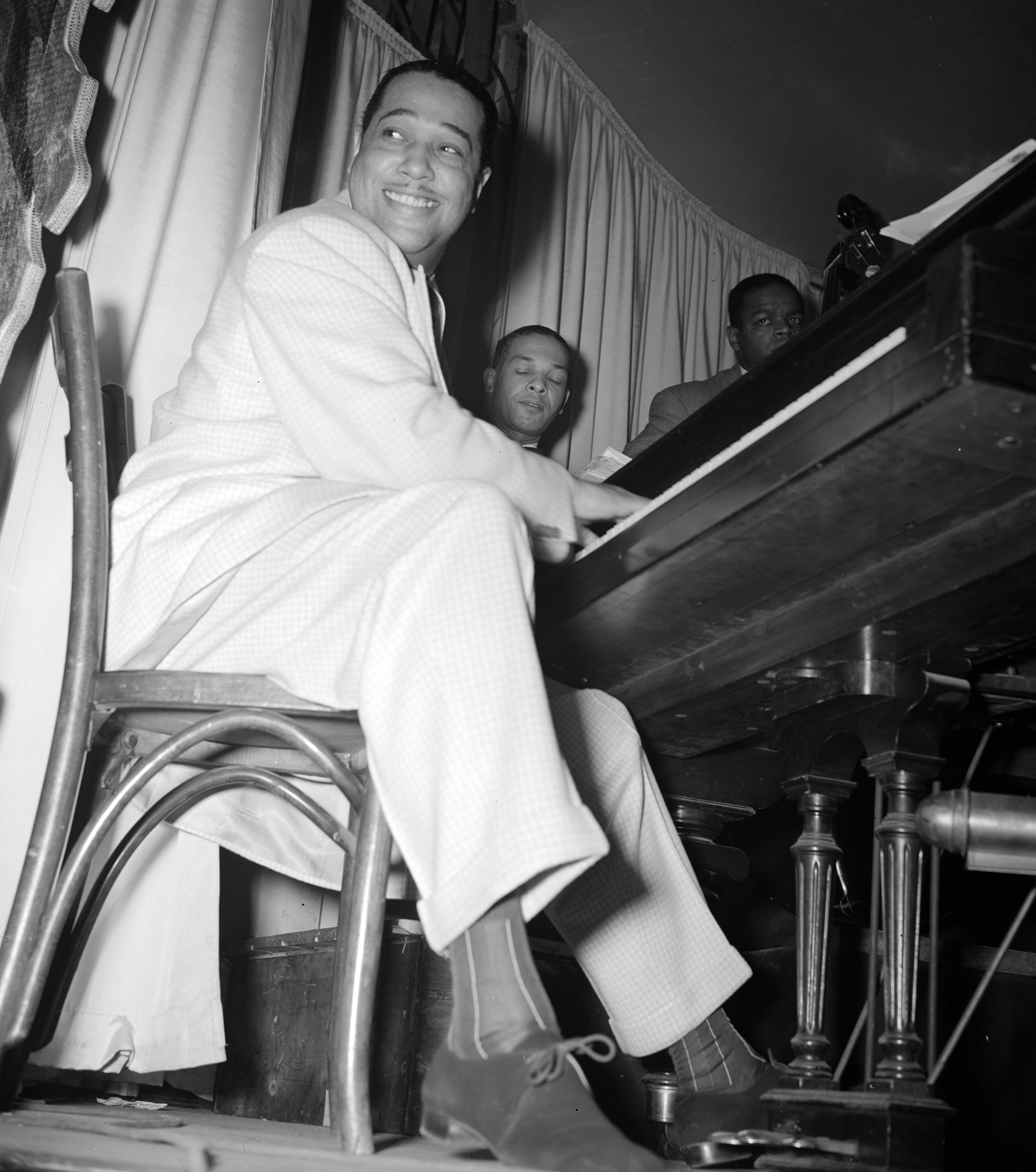
Benny Goodman became known as the “King of Swing.” Starting in 1934, Goodman’s bands and combos brought swing to nationwide audiences through ballroom performances, recordings, and radio broadcasts. Goodman was the first white bandleader to feature Black and white musicians playing together in public performances. In 1936, he introduced two great Black soloists—pianist Teddy Wilson and vibraphonist Lionel Hampton. Until then, racial segregation had held back the progress of jazz and of Black musicians in particular. In 1938, Goodman and his band, and several guest musicians, performed a famous concert at Carnegie Hall in New York City. Their performance was one of the first by jazz musicians in a concert hall setting.
Loading the player...Swing jazz
Other major bands of the swing era included those led by Benny Carter, Bob Crosby, Jimmy Dorsey, Tommy Dorsey, Woody Herman, Earl Hines, Andy Kirk, Jimmie Lunceford, Glenn Miller, Artie Shaw, Chick Webb, and, toward the end of the period, Stan Kenton. The bands in Kansas City, Missouri, especially the Count Basie band, had a distinctive swing style. These bands relied on the 12-bar blues form and riff backgrounds, which consisted of repeated simple melodies. They depended less heavily on written arrangements, allowing more leeway for rhythmic drive and for extended solo improvisations.
Boogie-woogie was another jazz form that became popular during the 1930’s. Chiefly a piano style, it used eight beats to the bar instead of four. Boogie-woogie featured the traditional blues pattern for most themes. The music had an intense quality that created excitement through the repetition of a single phrase. Albert Ammons, Pete Johnson, Meade Lux Lewis, and Pinetop Smith were among its most important artists.
Loading the player...Boogie-woogie jazz
Jazz vocalists came into prominence during the swing era, many singing with big bands. Many fine jazz singers emphasized popular songs. These singers included Mildred Bailey, Ella Fitzgerald, Billie Holiday, Nat King Cole, Carmen McRae, and Sarah Vaughan. Blues singing at its best can be heard in recordings by Jimmy Rushing, Jack Teagarden, Joe Turner, and Dinah Washington. In addition to singing, Nat King Cole was a superb jazz pianist and Jack Teagarden was a great jazz trombonist.
Bebop.
In the early 1940’s, a group of young musicians began experimenting with more complicated chord patterns and melodic ideas in a combo setting. The group included trumpeter Dizzy Gillespie, alto saxophonist Charlie Parker, pianists Bud Powell and Thelonious Monk, and drummers Kenny Clarke and Max Roach. The style they developed became known as bebop or bop.

Most bop musicians had an exceptional technique. They played long, dazzling phrases with many notes, difficult intervals, unexpected breaks, and unusual turns in melodic direction. On slower tunes, they displayed a keen ear for subtle changes of harmony. Only extremely skilled musicians were able to play bebop well, and only sophisticated listeners at first appreciated it.
Loading the player...Bebop
In bebop performances, musicians usually played an intricate melody, followed with long periods of solo improvisation, and restated the theme at the end. The bassist presented the basic beat for the group by plucking a steady, moving bass line. The drummer elaborated the beat with sticks or brushes on cymbals, snare drum, and tom-tom. The bass drum was reserved for unexpected accents called “bombs.” The pianist inserted complex chords at irregular intervals to suggest, rather than state, the complete harmonies of the piece.
Hard bop.
Bebop was followed in the 1950’s by hard bop, or funky, jazz. This form emphasized some of the traditional values of jazz derived from gospel and blues music, including rhythmic drive, uninhibited tone and volume, and freedom from restricting arrangements. The hard bop leaders were drummer Art Blakey and pianist Horace Silver. Blakey led a combo called the Jazz Messengers from the mid-1950’s until his death in 1990. The Jazz Messengers served as a training ground for many of the greatest soloists in jazz history. Trumpeter Clifford Brown and drummer Max Roach were co-leaders of another outstanding hard bop combo.

Cool jazz
originated in the works of such musicians as tenor saxophonist Lester Young, who starred with Count Basie, and guitarist Charlie Christian, who played with Benny Goodman. In the late 1930’s and early 1940’s, these musicians made changes in the sound and style of jazz improvisation. For example, they softened the tones of their instruments, used syncopation more subtly, and played with a more even beat.
In 1948, tenor saxophonist Stan Getz recorded a slow, romantic solo of Ralph Burns’s composition “Early Autumn” with the Woody Herman band. This work profoundly influenced many younger musicians. About the same time, pianist Lennie Tristano offered an alternative to bebop. His group and his own playing focused on long, even solo lines. His drummer laid down a steady, quiet beat with brushes to avoid obscuring the complicated improvisations of the soloists.
In 1949 and 1950, a group of young musicians that included trumpeter Miles Davis, alto saxophonist Lee Konitz, baritone saxophonist Gerry Mulligan, and arranger Gil Evans recorded several new compositions. These recordings emphasized a lagging beat, soft instrumental sounds, and unusual orchestrations that included the first successful use of the French horn and the tuba in modern jazz. The recordings, with Davis as leader, were later released as Birth of the Cool.
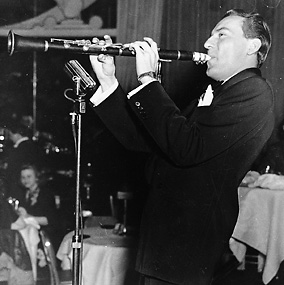
During the 1950’s, many combos became identified with the cool movement. Some of the most successful combos were the Gerry Mulligan Quartet, the Modern Jazz Quartet, and the Dave Brubeck Quartet.
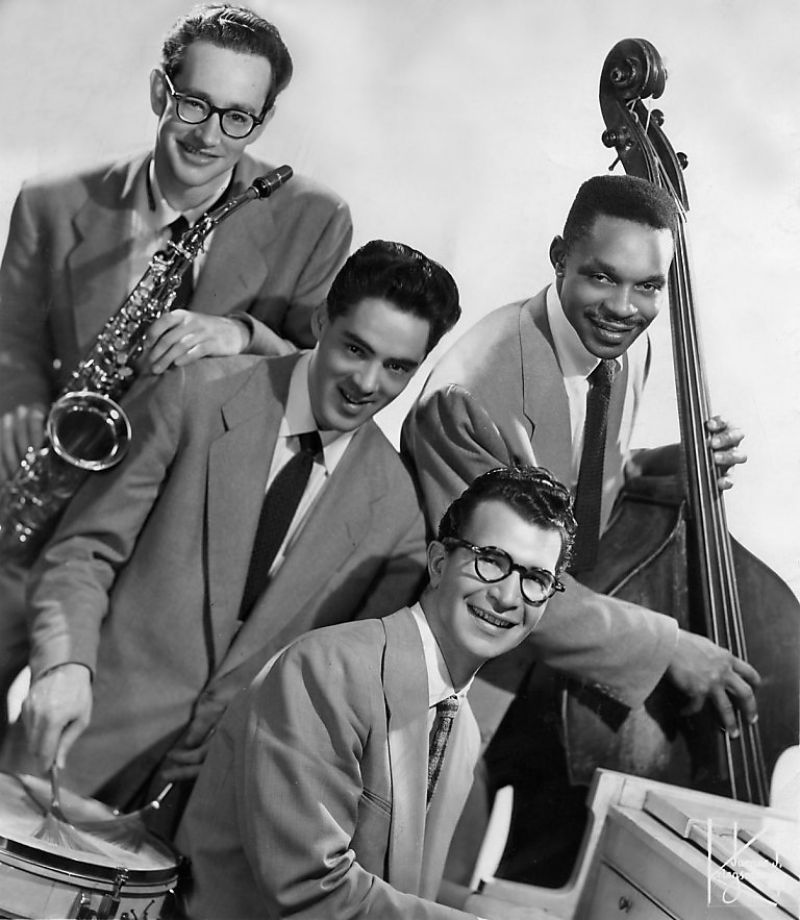
The spread of jazz.
In the 1940’s and 1950’s, the sophisticated forms of bebop and cool jazz began to gain wide acceptance among intellectuals and college students. Jazz concerts became popular. Groups of jazz stars made a series of international tours called Jazz at the Philharmonic. The international growth of jazz resulted in many successful overseas tours by U.S. bands and combos.

The introduction of the 331/3 rpm long-playing (LP) record, which was first produced commercially in 1948, also helped spread the popularity of jazz. For 30 years, jazz recordings had been limited to 78 rpm records that restricted performances to about 3 minutes in length. The LP allowed recorded performances to run many minutes. The LP also permitted a number of shorter performances to be issued on a single record.
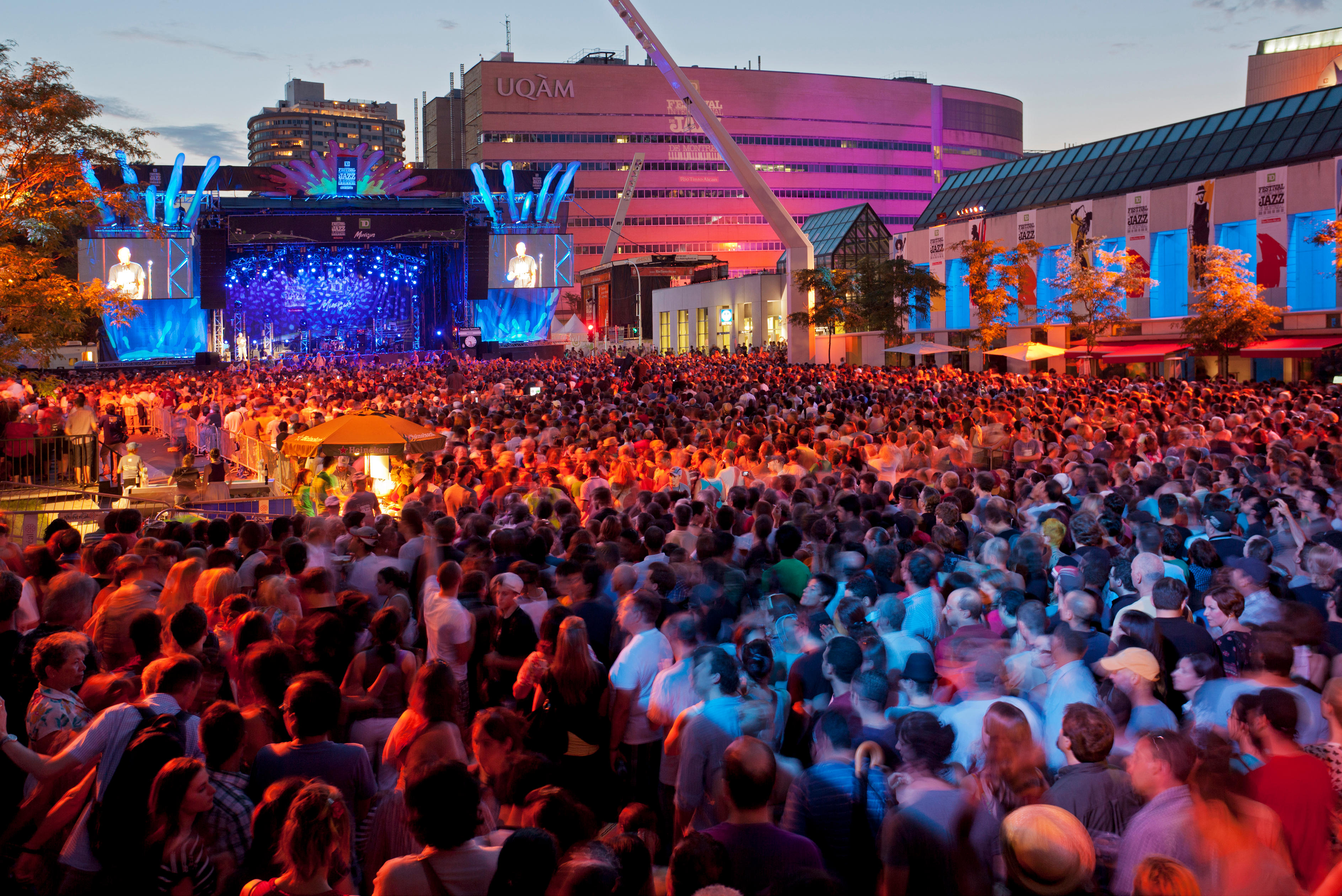
The first foreign jazz musicians to influence Americans were Belgian-born guitarist Django Reinhardt in the late 1930’s, and George Shearing, a blind, English-born pianist who immigrated to the United States in 1947. During the 1950’s, musicians in other countries began to improve greatly as jazz performers as they were exposed to performances by American musicians through recordings and concerts. Sweden, France, Germany, Japan, and other countries developed players and composers whose work compared favorably with that of the leading Americans.
In 1954, the first large American jazz festival was held at Newport, Rhode Island. Since then, annual festivals also have been held in Monterey, California; New York City; Chicago; Nice, France; Montreux, Switzerland; Warsaw, Poland; Berlin, Germany; and many other locations throughout the world. These festivals have featured almost all of the most popular jazz musicians and have introduced many extended concert works.
New directions.
Beginning in the 1950’s, jazz became even more experimental. Jazz music began to feature nontraditional instruments, such as French horn and bass flute. Jazz musicians began to take an interest in non-Western music, especially the modes (different arrangements of scales), melodic forms, and instruments of Africa, India, and the Far East.
In the late 1950’s, John Lewis, musical director of the Modern Jazz Quartet, worked with classical musician and composer Gunther Schuller to write and play orchestral works that combined elements of modern jazz and classical concert music. Stan Kenton also played this so-called third stream music when he toured the United States with a 40-piece orchestra.
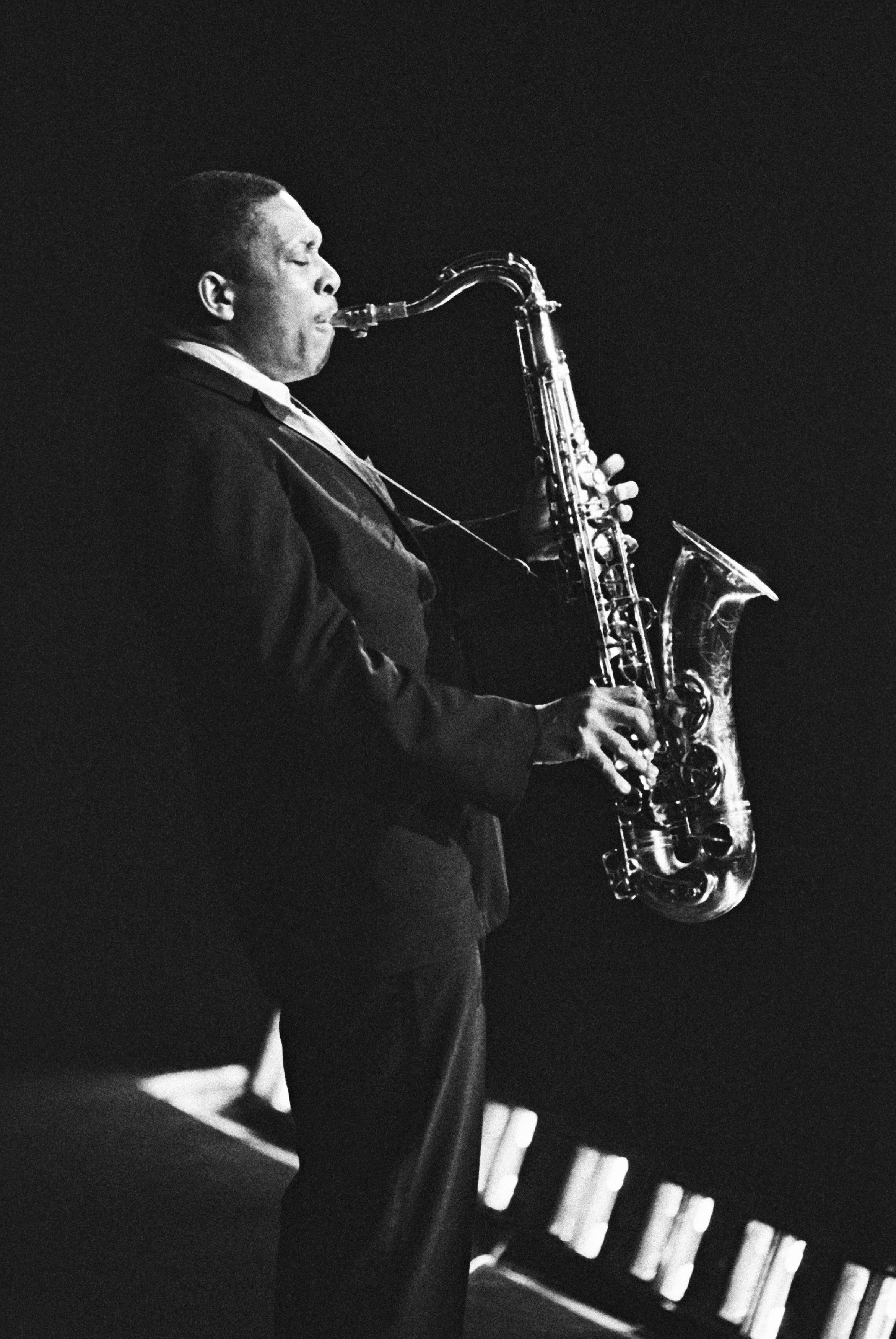
Also during this period, pianist George Russell developed a jazz theory of modes. In 1959, the Miles Davis combo, with pianist Bill Evans and saxophonists John Coltrane and Cannonball Adderley, recorded compositions and improvised solos based on modes rather than on patterns of chords.
In 1960, saxophonist Ornette Coleman reshaped the thinking of younger jazz musicians when he recorded the album Free Jazz with a double quartet. In this recording, Coleman discarded harmony, melody, and regular rhythms. He substituted unstructured improvisation played atonally (in no definite key). Pianist Cecil Taylor and bassist Charles Mingus conducted similar atonal experiments.
In the 1960’s, the influence of the music of India entered jazz through the adaptations of John Coltrane. Jazz musicians also began to use more unusual meters, such as 5/4, 7/4, and 9/8.
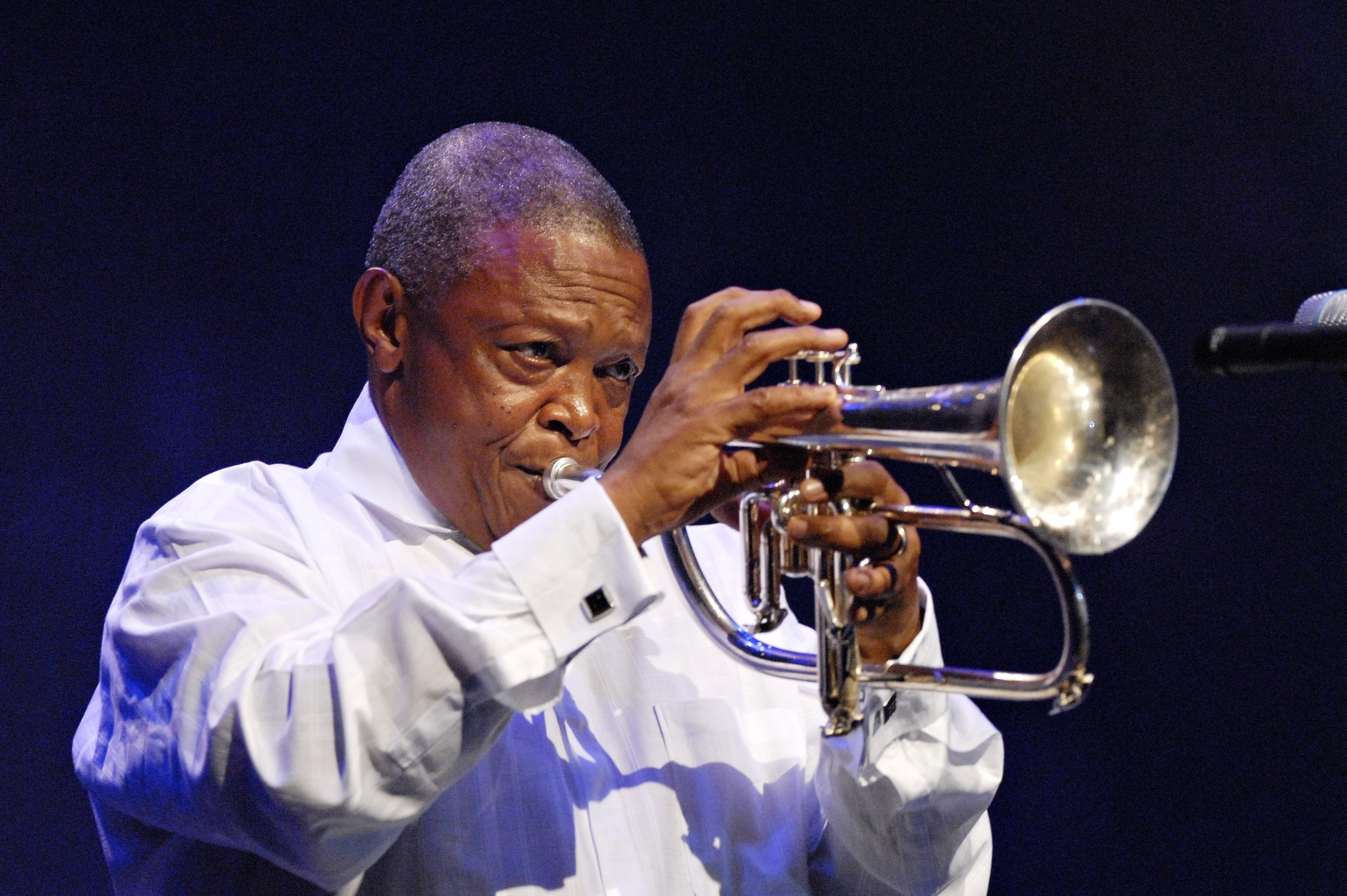
Fusion.
In the 1970’s, many musicians blended jazz and rock music into fusion jazz. Fusion combined the melodic and improvisational aspects of jazz with the rhythms and instruments of rock. Electronic music played an important part in fusion. Jazz pianists began exploring the increased sound potential of synthesizers. Horn and string players began to use electronics to intensify, distort, or multiply their sounds. Many well-known jazz musicians gained new popularity by playing fusion. Some of the best-known fusion musicians were guitarist George Benson, trumpeters Donald Byrd and Miles Davis, pianist Herbie Hancock, and two combos, Weather Report and the Mahavishnu Orchestra.
Loading the player...Fusion jazz
At the same time, many veteran jazz musicians retained their popularity by leading groups that played in the swing, bebop, and cool styles. These leaders included Stan Getz, Dizzy Gillespie, Woody Herman, Gerry Mulligan, and Oscar Peterson.

Recent developments.
During the 1980’s, a number of young jazz musicians returned to mainstream jazz. Mainstream jazz includes elements of the swing, cool, and bebop styles. The most widely acclaimed young musician of the 1980’s was trumpeter Wynton Marsalis, a performer of both jazz and classical music. Marsalis plays with brilliant technique and tone. He and his brother, saxophonist Branford Marsalis, have led excellent hard bop combos.
Many young musicians continued to forge ahead with fusion groups. Two of the most respected fusion artists are the brothers trumpeter Randy Brecker and saxophonist Michael Brecker. Jane Ira Bloom also displays a mastery of the soprano saxophone and the synthesizer.
In the 1990’s, jazz was dominated by a blend of older values and more modern styles. Many musicians favored acoustical over electronic instruments, formal structure over total freedom, and a sense of history over harsh modernity. Music of older artists continued to gain respect and followers. For example, bands devoted to the music of Count Basie and Charles Mingus became popular. Veteran musicians, such as trombonist J. J. Johnson and saxophonists Joe Henderson and Sonny Rollins, found new audiences among younger listeners.
The young musicians who energized jazz in the 1980’s had become establishment figures by the end of the 1990’s. They included trumpeters Roy Hargrove and Wynton Marsalis, guitarist Pat Metheny, trombonists Steve Turre and Ray Anderson, and pianist Chick Corea. A younger group of musicians also gained popularity, focusing on “straight-ahead jazz” that reflected earlier mainstream styles. They included saxophonists Joshua Redman and Donald Harrison, bassist Christian McBride, trumpeter Terence Blanchard, and pianist Marcus Roberts. At the same time, the free jazz style of the 1960’s continued strong throughout the 1990’s in the playing of saxophonists Steve Lacy, John Zorn, and Roscoe Mitchell and their young followers.
Today, jazz continues to feature a variety of styles. Many musicians play in historic styles, such as swing and bebop. Others seek a more experimental approach. For example, the Art Ensemble of Chicago blends free jazz, African costumes and makeup, exotic instruments, and surprise techniques into theatrical musical events. Ornette Coleman’s group, called Prime Time, mixed free and fusion jazz in new and interesting ways. No single style has become dominant in the early 2000’s.
Electronics technology is gaining a greater role in jazz music. Such composers as George Lewis have demonstrated that live musicians can interact creatively with computer-generated sound. Some artists have attempted new fusion sounds that blend jazz with such forms as rap music.
